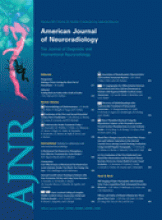Abstract
BACKGROUND AND PURPOSE: It is unclear whether the costs and risks of mechanical therapies make them cost-effective. We examined whether interventions such as mechanical clot removal or disruption with angioplasty are cost-effective for acute ischemic stroke compared with best medical therapy.
MATERIALS AND METHODS: We performed a cost-utility analysis of patients with acute stroke due to large intracranial artery occlusion presenting beyond the 3-hour window for IV tPA. Model inputs for the mechanical arm were derived from Multi MERCI trial data and a recent meta-analysis. For best medical therapy, we used rates of spontaneous recanalization, ICH, and functional outcomes based on a systematic literature review. Discounted QALYs were determined by using the Markov modeling for 65-year-old patients with acute ischemic stroke.
RESULTS: On the basis of a systematic literature review, we modeled an 84% rate of recanalization with mechanical intervention and a 6.3% rate of symptomatic ICH. For best medical therapy, we modeled a spontaneous recanalization rate of 24% with a 2% rate of symptomatic ICH. Mechanical therapies were associated with a $7718 net cost and a gain of a 0.82 QALYs for each use, thus yielding a net of $9386/QALY gained. In sensitivity analyses, results were dependent on the rates of recanalization, symptomatic ICH rates, and costs of treatment.
CONCLUSIONS: On the basis of available data, mechanical therapies in qualified patients with acute stroke beyond the window for IV tPA appear to be cost-effective. However, the inputs are not derived from randomized trials, and results are sensitive to several assumptions.
Abbreviations
- CI
- confidence interval
- ECASS III
- European Cooperative Acute Stroke Study III
- FDA
- US Food and Drug Administration
- ICH
- intracerebral hemorrhage
- IV
- intravenous
- MERCI
- Mechanical Embolus Removal in Cerebral Ischemia
- mRS
- modified Rankin Scale
- MS-DRG
- Medicare Severity-Diagnosis-Related Groups
- NIR
- neurointerventional radiology
- PROACT II
- Prolyse in Acute Cerebral Thromboembolism II
- QALY
- quality-adjusted life-year
- Rx
- drug therapy
- tPA
- tissue plasminogen activator
- yo. w/
- years old with
- Copyright © American Society of Neuroradiology












